Today in 1920: Mrs. Wilson’s Cheese Sauce
As we look ahead to 2020 and what lies to our future, I can’t help but think about how people 100 years ago were looking ahead to a decade that would later be remembered as the Roaring ’20s.
This was a time long before our fascination with all things food; before cooking shows and food magazines. We were just beginning to see women’s pages in newspapers take hold across the industry. These same pages tell us a lot about how women were living in 1920. This year – 100 years later – I’ll be taking a look at what we were eating then and the role food played in our daily lives through the lens of our number one news source at the time.
Mrs. Wilson’s Rules for Marketing
The Philadelphia, Pennsylvania Evening Public Ledger published an eclectic women’s page that included short stories, general advice to readers, fashion discussions and, of course, cooking instructions.
Mrs. M.A. Wilson would gladly provide readers with advice for any cooking problems. All they needed to do was send their questions to her at the newspaper. She regularly provided menus and recipes for the homemaker, too.
On January 9, 1920, Mrs. Wilson provided six rules for economical shopping. Not surprisingly, they are all still relevant today.
- Rule 1: Watch food advertisements. I agree totally. This also nudges the shopper to plan for the week.
- Rule 2: Do the shopping yourself so you select the best quality for the best value. I still agree with this concept when shopping for fruits, vegetables, and meats… which is largely how we purchased food in 1920. This is the only way to ensure a high-quality product for the price you’re paying. That said, grocery pick-up and delivery are modern conveniences that certainly have their place in our lives.
- Rule 3: Limit the use of eggs and butter. This one might seem odd… until I tell you these two items were very expensive at the time. You can read more about the egg shortage of 1919. Generally, when on a budget or simply trying to be frugal, it’s important to plan meals around items that can stretch. In other words, don’t plan to eat lobster every night unless you really can afford to.
- Rule 4: Purchase foods in season. It’s hard to expand on this one because it’s self-explanatory. Even today, shopping locally and using produce when it is in season is more economical – and flavorful.
- Rule 5: A woman can throw out more with a teaspoon than a man can bring in with a shovel. I will let you interpret this one how you like!
- Rue 6: Haste makes waste. I say this all the time about many things. It refers back to taking time to plan your weekly meals and shop for what you need. I would also add don’t take your husband and children to the grocery store with you… you’ll end up with way more than you need!
I like Mrs. Wilson. She’s no-nonsense!
1920 Sunday Menu
Mrs. Wilson also suggested a Sunday menu along with a shopping list.
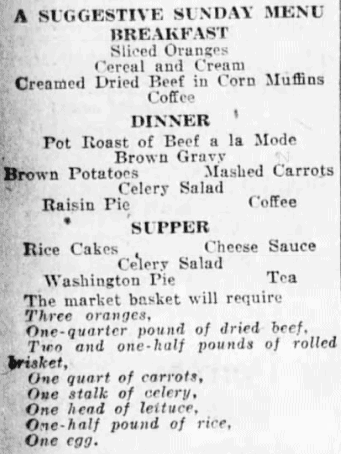
For the busy homemaker – and they all were – this would be a menu to keep and use regularly and it reflects Mrs. Wilson’s rules. The planning work has been done for you! Notice the mid-day meal – dinner – is large. This was normal in our culture then, certainly on a Sunday. Supper – the evening meal – was light and might include leftovers remade into something else.
Nothing from this menu should be a surprise. We still eat these same foods today in the Midwest. Roast beef is common and the potatoes and carrots side dishes are common, too, albeit in various forms.
The creamed beef in corn muffins is a variation of our creamed beef on toast. This isn’t as common today, but I still see it and eat it on occasion.
Rice cakes with cheese sauce are not common, however. These rice cakes would likely have been fried like we would potato fritters, then covered in cheese sauce. I can think of better ways to use cheese sauce! Like the loaded twice baked potatoes I made when I reworked the cheese sauce recipe.
Loaded Twice Baked Potatoes with Cheese Sauce
In all honesty, you don’t really need a recipe for the loaded twice baked potatoes. I used my Instant Pot to cook the potatoes because it’s substantially faster than the oven and the potatoes turn out very good. I suggest using your Instant Pot over the microwave for quick “baked” potatoes.

Then all you need to do is pile bacon, green onions, broccoli, or whatever you want on top of the opened potato half, cover it in the cheese sauce and pop it under the broiler for a bit. We had these and a salad for dinner and were stuffed! Kind of like the potatoes!
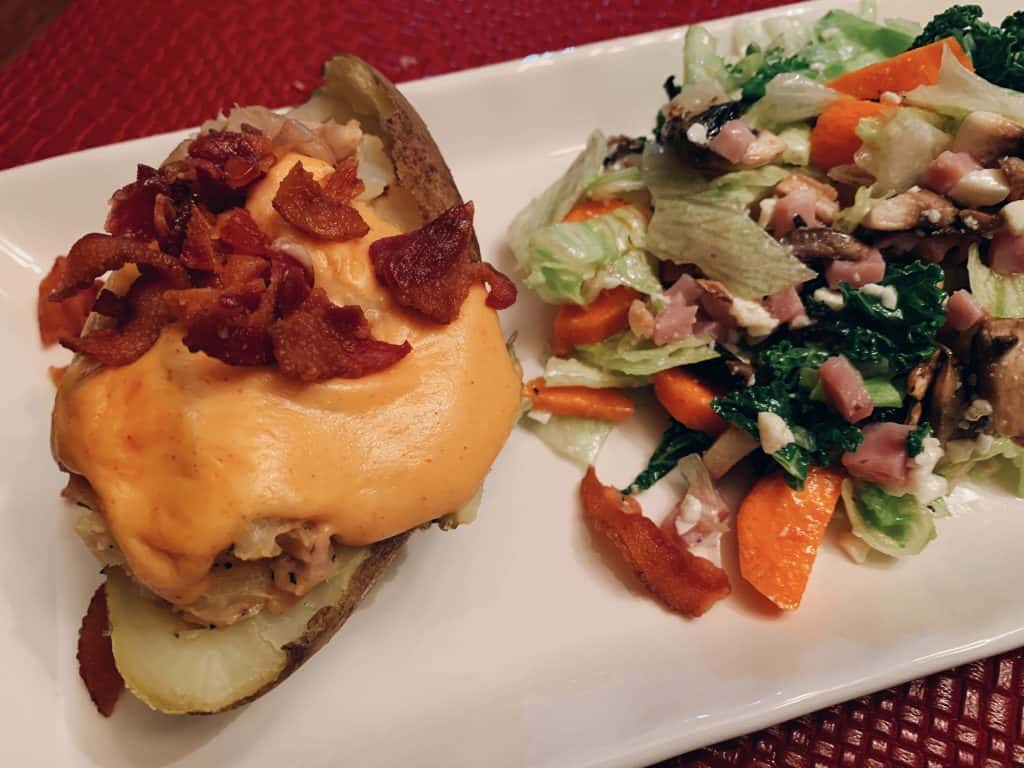
The 1920 recipe omits butter because it was very expensive. It also uses very little cheese – something I added more of in my recipe. The addition of the paprika adds flavor but also color to a sauce that would be very pale with so little cheese. I traded the flour for a little cornstarch – with the additional cheese, the amount of flour used as a thickening agent can be reduced significantly. The cheese will naturally thicken the sauce.
I used the cheese sauce with potatoes, but it can be used on other vegetables, especially if you have a picky eater. The cheese sauce can also be used as a base for a dip or cheesy soup of some sort. It’s a very versatile item.
This post contains affiliate links. For more information, please read our policies. Affiliate income simply helps offset the cost of Rooted In Foods and is greatly appreciated.

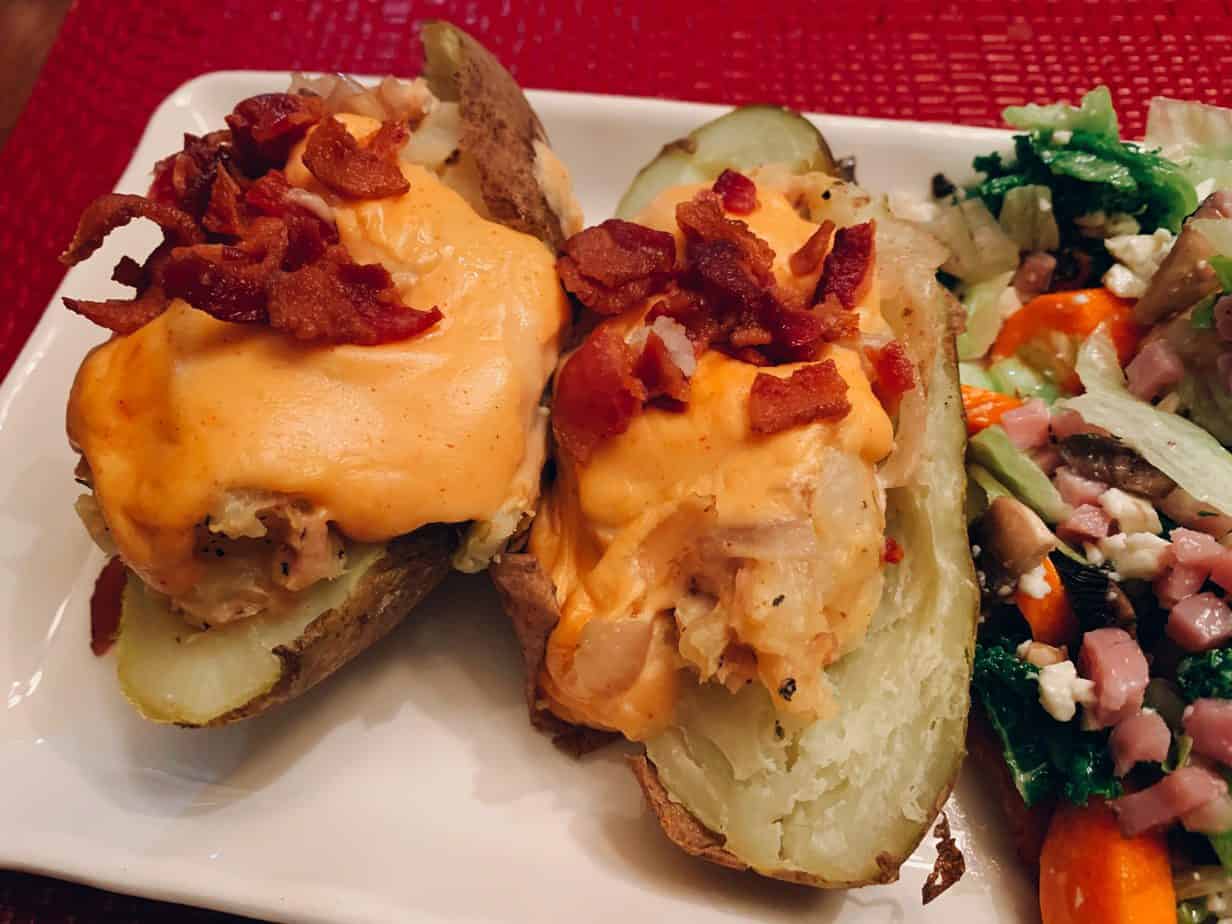


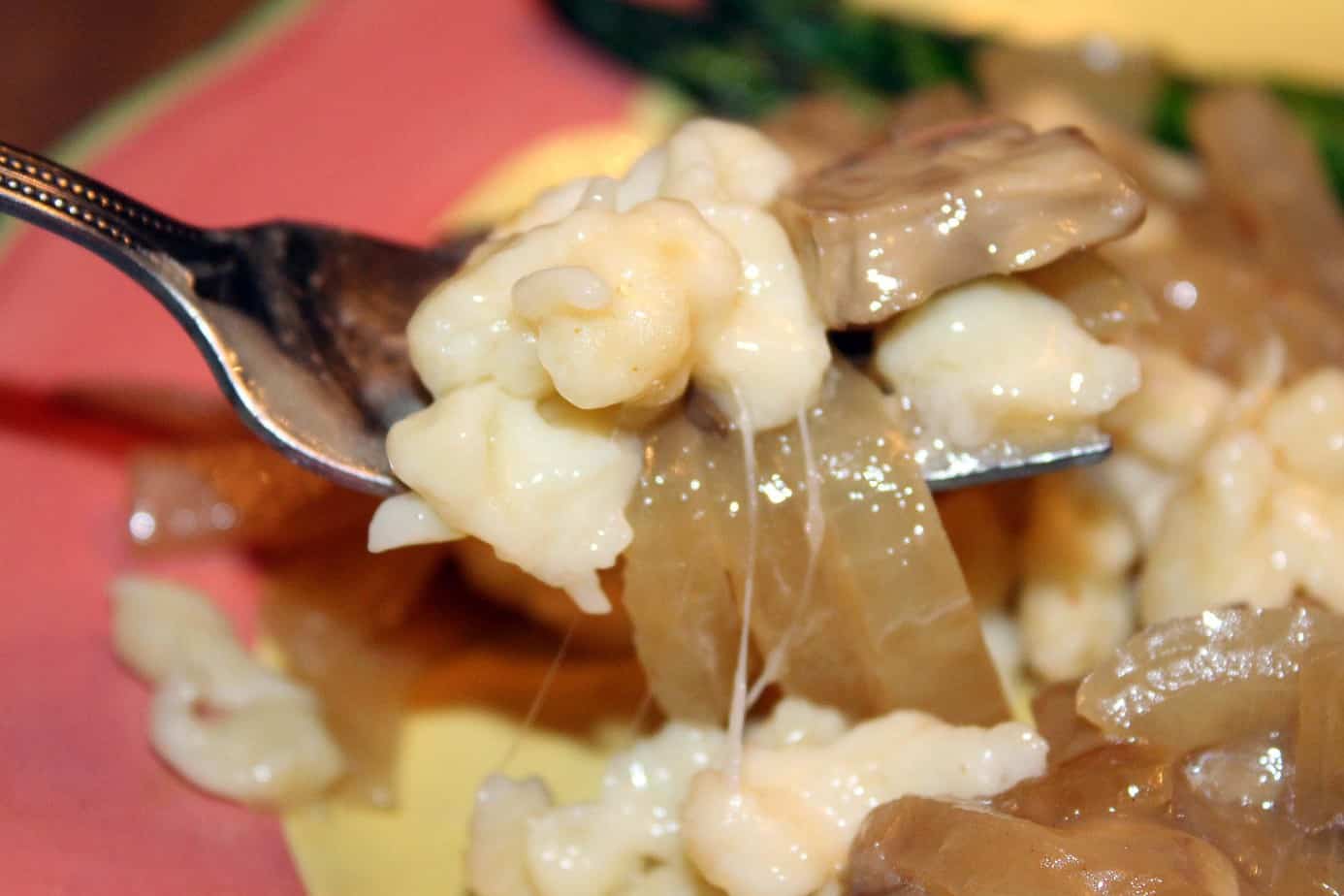

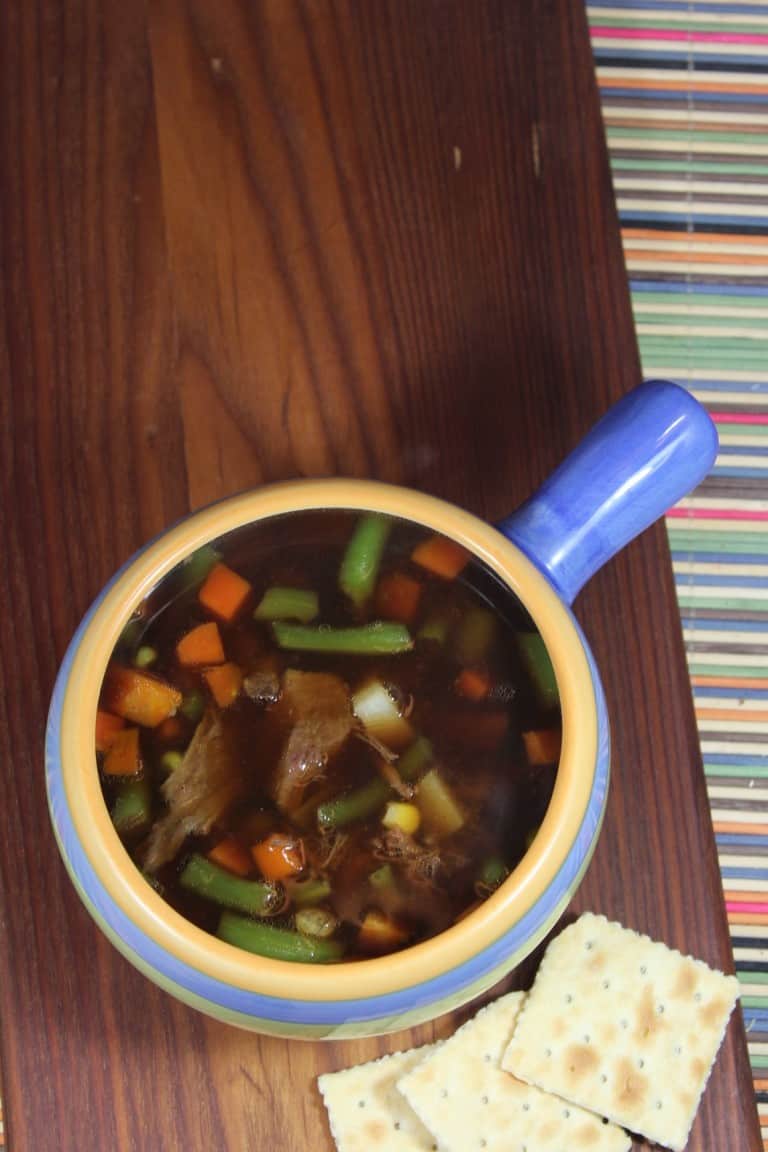

I love your blog, because my interests are so similar. Cooking through history brings us closer to those remote family members. While your stuffed potato is yummy, I think our grandmothers in 1920 might have been horrified at such a huge meal. I am off to look up rice cakes in a vintage cookbook, because they sound like a great way to use leftovers. As to the egg and butter shortage and expense. I can’t imagine it affected our farmer ancestors as much as their city cousins.
Thanks, Vera! Oh, our serving sizes are most definitely larger (by a lot) than even just 50 years ago, so I’m sure they would’ve gasped! Let me know what you find about rice cakes. I looked through a few old cookbooks without much luck, but I’m sure it’s out there!